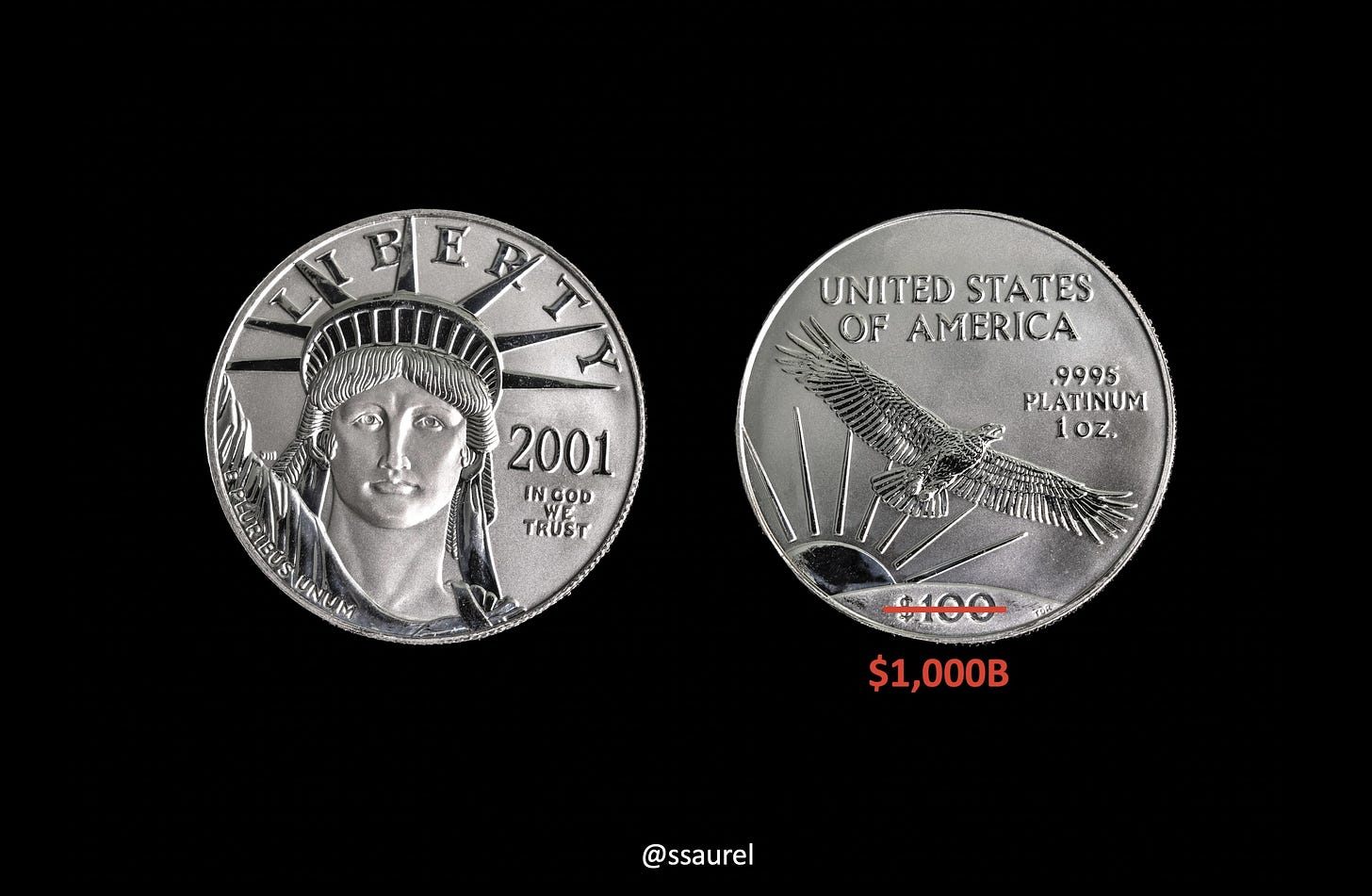Joe Biden and the Crazy Idea of a $1 Trillion Coin To End the US Debt Ceiling Problem
Some see this as a solution to this recurring psychodrama.
America is repeatedly faced with the same debt ceiling psychodrama. America is indeed under a legislative limit on the amount of national debt that can be incurred by the U.S. Treasury. This limits how much money the federal government can pay on the debt already borrowed.
The U.S. government regularly hits the ceiling on this debt.
To continue to functio…
Keep reading with a 7-day free trial
Subscribe to Sylvain Saurel’s Newsletter to keep reading this post and get 7 days of free access to the full post archives.




